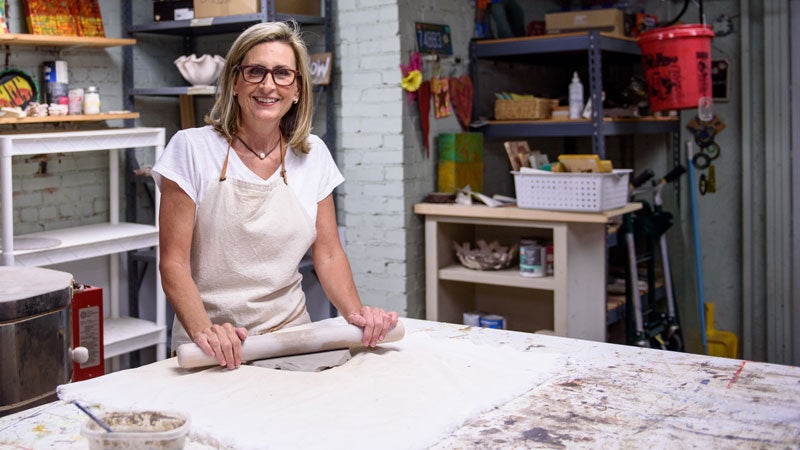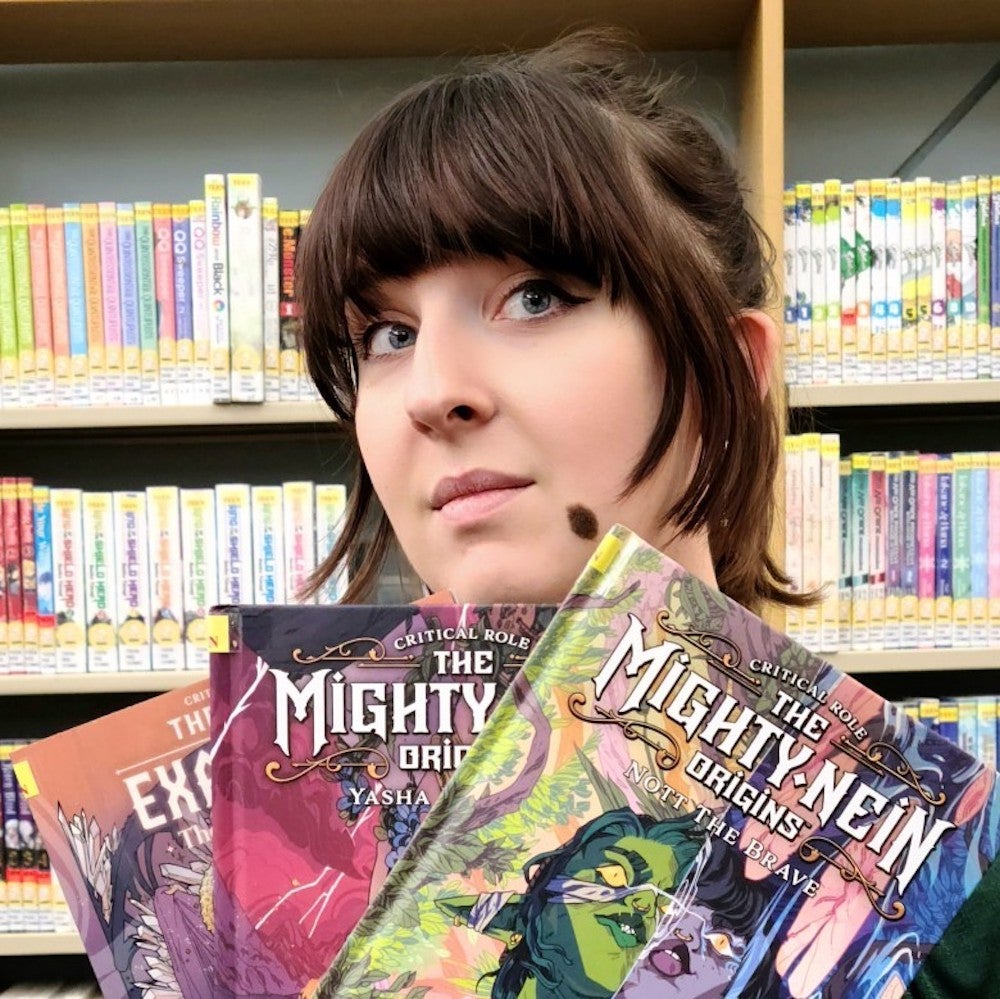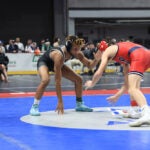Artistic precision. It’s holding a paintbrush just right to control your stroke. It’s knowing how to mold something seamlessly. It’s mixing the perfect color for a canvas. It’s translating something imagined into something tangible, all by the hands of the artist.
Elizabeth Hubbard does not work with this type of control. She’s skilled at what she does, but she truly loves losing all control in her pottery. “You’re creating something and trying to manipulate it, but it never turns out the way you want it to turn out, like life in general,” she says.
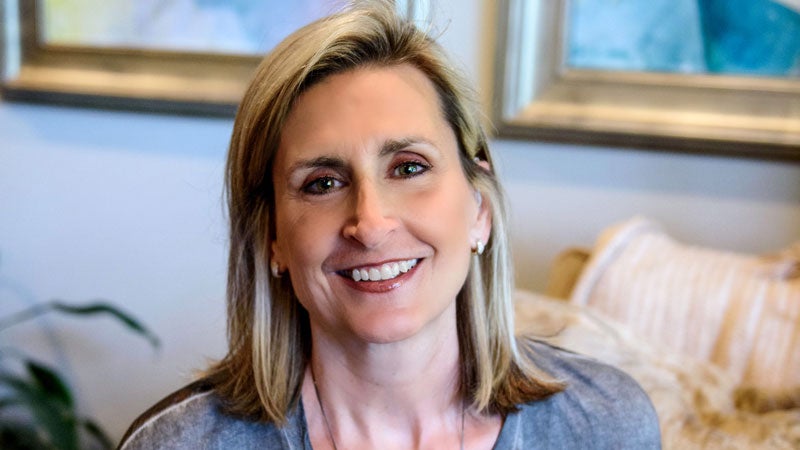 The artist characterizes this surprise as a quality of Raku, a process in which a piece of clay is fired in a kiln, removed while glowing red, and placed into a sealed, newspaper-lined can. The smoke and flame fill the space and color the glaze. It’s only when Elizabeth delicately cleans each piece that she sees the colors that emerge from the process. As she scrubs the pottery to remove each piece of soot, the iridescent purples or bright turquoises emerge, and she sees her final piece.
The artist characterizes this surprise as a quality of Raku, a process in which a piece of clay is fired in a kiln, removed while glowing red, and placed into a sealed, newspaper-lined can. The smoke and flame fill the space and color the glaze. It’s only when Elizabeth delicately cleans each piece that she sees the colors that emerge from the process. As she scrubs the pottery to remove each piece of soot, the iridescent purples or bright turquoises emerge, and she sees her final piece.
Elizabeth is known for her Raku pottery, particularly her bowls, and it’s her favorite medium. “Clay came out of the ground, and you watch it evolve into something from dirt to something pretty,” she explains. “The cracks and brokenness are a part of me. Pottery’s messy, and my life’s messy. It really represents a lot of us.” The clay flows in Elizabeth’s bowls, moving up and down to create a soft edge rather than a crisp, stiff one. In some bowls, layers of clay weave in and out to form the structure, and in others, smooth clay blends with cracked, colorful texture.
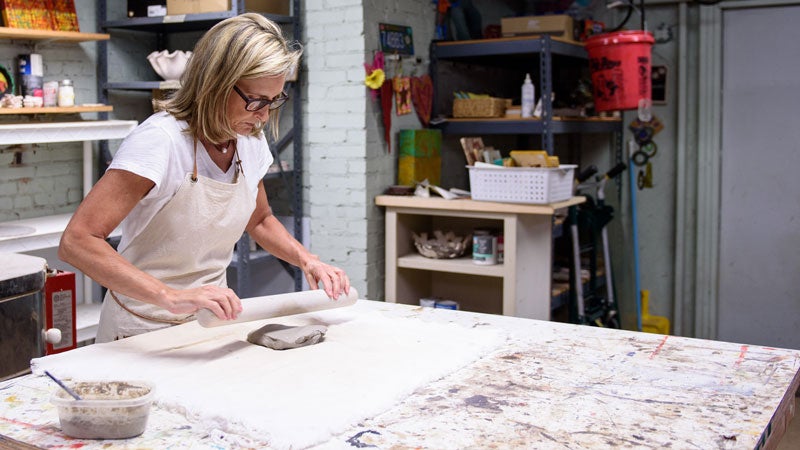 Although she only took up pottery when she took a class in Gainesville, Georgia, Elizabeth always painted and knew that her life had to relate to art. She was born with 96 percent hearing loss, and while she considered pursuing other careers, she knew that art is what she could do and how she would thrive. “My hearing loss is part of me. It’s made me who I am today,” Elizabeth says. It’s never been something she’s tried to hide.
Although she only took up pottery when she took a class in Gainesville, Georgia, Elizabeth always painted and knew that her life had to relate to art. She was born with 96 percent hearing loss, and while she considered pursuing other careers, she knew that art is what she could do and how she would thrive. “My hearing loss is part of me. It’s made me who I am today,” Elizabeth says. It’s never been something she’s tried to hide.
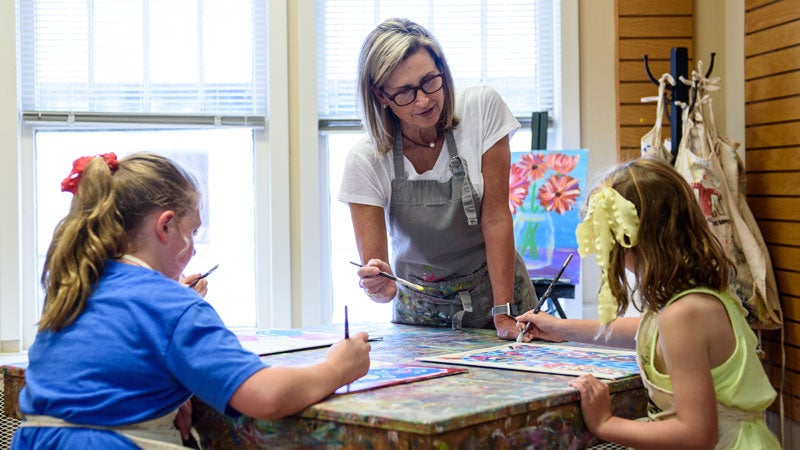 In addition to her own painting and pottery, Elizabeth teaches art classes in her downtown Homewood studio, sharing her enjoyment and philosophy of art with others. From children’s art camps to women’s home gatherings, she finds beauty in just creating anything, not something refined and perfect. “Kids do too much,” she says of children who were like her sons growing up and committed to an intense sport or activity. “They’re striving to be so perfect in what they’re doing, and in art, you don’t have to be perfect. There’s no such thing as being perfect in art.”
In addition to her own painting and pottery, Elizabeth teaches art classes in her downtown Homewood studio, sharing her enjoyment and philosophy of art with others. From children’s art camps to women’s home gatherings, she finds beauty in just creating anything, not something refined and perfect. “Kids do too much,” she says of children who were like her sons growing up and committed to an intense sport or activity. “They’re striving to be so perfect in what they’re doing, and in art, you don’t have to be perfect. There’s no such thing as being perfect in art.”
In preparation for five weeks of art camps held at local churches, she collects her materials in her basement, her own personal studio out of her Homewood home, lined with bowls, molds, supplies, and the paintings she is working on. But art still fills her house beyond her workspace. “I always buy art from other artists. This house represents me and my style. You can tell all the styles are totally different,” she says. From a large and colorful Joan Curtis abstract to a Jayne Morgan honey bear in her kitchen, both local artists, her home truly unites dozens of different ideas and styles within the purpose of buying original art.
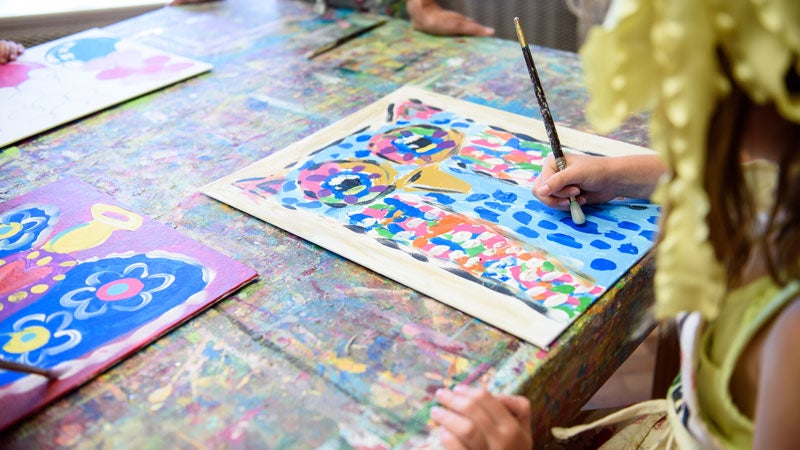 “I’m always trying to educate people about art, about buying local art, not manufactured art pieces,” she explains. “Your art will last longer than your furniture and is worth more than your furniture.” Elizabeth walks around her home knowing the name of every artist behind each work, articulating her personal connections with them. The bright colors in the paintings flow on each canvas and warm the walls of her home. She knows the artists’ journeys, how they like to paint and the style they enjoy.
“I’m always trying to educate people about art, about buying local art, not manufactured art pieces,” she explains. “Your art will last longer than your furniture and is worth more than your furniture.” Elizabeth walks around her home knowing the name of every artist behind each work, articulating her personal connections with them. The bright colors in the paintings flow on each canvas and warm the walls of her home. She knows the artists’ journeys, how they like to paint and the style they enjoy.
Beyond sharing the importance of local art with others, Elizabeth finds beauty of the artistic practice that she wants others to see, the same experience she creates in her art lessons and classes for children. “People always say that they can’t do art. Nothing’s going to look perfect, but it gives you therapy. It shuts your mind down, and you get immersed into what you’re doing,” she says.
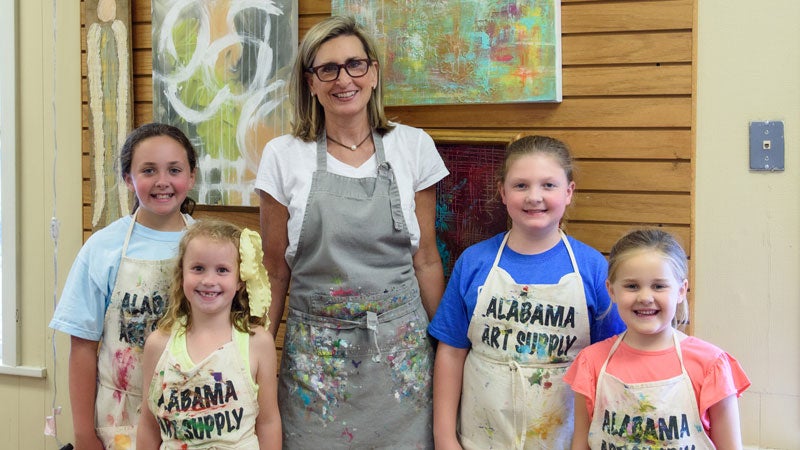 There’s something beyond the final product of art that she admires, and she seeks to share the experience of making art with everyone, allowing anyone to make something one-of-a-kind. She remembers working on a painting with Bess, a child born with cerebral palsy and with very limited use of her arms and legs. She wanted Bess to experience some of the painting that other children were working on, a large painting of an angel. She guided Bess’s hand and placed it in yellow paint to layer onto the angel’s wings. “I know she could feel the paint, the angel was coming out of her,” she says. “I could feel the connection through her eyes.”
There’s something beyond the final product of art that she admires, and she seeks to share the experience of making art with everyone, allowing anyone to make something one-of-a-kind. She remembers working on a painting with Bess, a child born with cerebral palsy and with very limited use of her arms and legs. She wanted Bess to experience some of the painting that other children were working on, a large painting of an angel. She guided Bess’s hand and placed it in yellow paint to layer onto the angel’s wings. “I know she could feel the paint, the angel was coming out of her,” she says. “I could feel the connection through her eyes.”
Why Elizabeth Loves Homewood
Go-to lunch? Sam’s Super Samwiches
Dinner spot? Little Donkey
Favorite dessert? Lucky Cat Rolled Creams
Place to shop? 28:20 Boutique
A Homewood memory? Going to high-school games for my sons and experiencing the tight-knit community with other families
Gather. Create. Connect.
That’s the motto for Elizabeth’s new adventure, Makers and Creators after dark, a group for women to come together and learn a new art. From mixed media to flower arranging, it’s a relaxed atmosphere of simply creating art and meeting new people. The events will be going on throughout the summer, and you can find the schedule on the “Makers and Creators” Facebook page.

